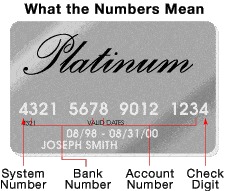Welcome back for Part 6 in our series, The Top Ten phrases in the fraud industry (and what they really mean!)
What are credit card BIN checks?
Credit card numbers. Those 4×4 groupings of numbers that every consumer enters into a website checkout to make a purchase. They appear to be random, right? Wrong. Those numbers on every credit and debit card issued in America is in fact a highly organized and regulated set of identifiers unique to every card.
Today we are going to talk about BIN checks. BIN stands for Bank Identification Number, and it exists for merchants to help validate the card that a consumer is presenting for payment with the bank that issued that card. An exact BIN check can go by several other names, such as ‘Industry Identification Number’ or simply ‘credit card number’. Regardless though of what it is called, it is as good of an identifier as a person’s name on a card, and is a crucial step in stopping online fraud.
Card number layout
The first number on a card is arguably the most important. It represents the ‘Major Industry Identifier’. As represented by this chart below (credit to Wikipedia), almost all consumer cards used in an online purchase will have a 4 or 5 in the beginning of a card.
- 0 – ISO/TC 68 and other future industry assignments
- 1 – Airlines
- 2 – Airlines and other future industry assignments
- 3 – Travel and entertainment and banking/financial
- 4 – Banking and financial
- 5 – Banking and financial
- 6 – Merchandising and banking/financial
- 7 – Petroleum and other future industry assignments
- 8 – Healthcare, telecommunications and other future industry assignments
- 9 – National assignment
After the first number, the following five numbers are included as part of the ‘Issuer Identification Number’. These first six numbers are what a merchant would look up in a Bank Identification Number (BIN) check. The following numbers then specify the exact account that the consumer has with the card issuer and does not relate to the merchant as those numbers are for their tracking purposes only.
Example case
Understanding the identification of a bank is a critical step in stopping fraud. Let’s say that a French consumer is purchasing a good from an American website. If the IP address is coming from France, and the shipping address is to United States but a BIN check shows that the bank that issued the card is from China that should draw a red flag for a merchant.
Why would a French consumer have an American card if they are buying from China? Is there some kind of family relation between the buyer and the receiver of goods? Is there a cross business situation at hand? Understanding how a consumer came to possess any type of debit or credit card, and their connection to the bank that issued that card will greatly reduce the possibility that a merchant will process a payment on a stolen credit card.
Final thoughts
For simple BIN checks a merchant can find any number of helpful free websites such as binchecker.com to give them the raw basics. But for a far deeper analysis of an order and understanding the relation between a customer’s card and the billing and shipping address, Signifyd can provide merchants an unmatched detailed analysis on every order. If you have any questions about BIN checks, how to implement them or their overall strategy in fraud prevention please feel free to reach us at [email protected] or at [email protected]









